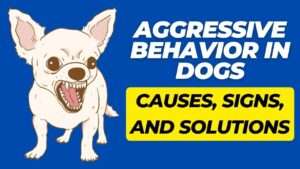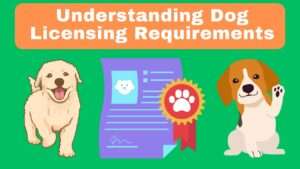As a dog owner, understanding leash laws is essential for the safety of your pet, other people, and the community at large.
Leash laws regulate when and where dogs must be on a leash in public spaces, and violating these laws can result in fines or other penalties.
In this comprehensive guide, we’ll delve into everything you need to know about navigating leash laws, ensuring you and your furry companion can enjoy outings responsibly and in compliance with local regulations.
Contents Overview
What are Leash Laws?
Leash laws are regulations that require dog owners to keep their pets on a leash or similar restraint when in public spaces. These laws are established at various levels of government, including municipal, county, and state levels.
Leash laws are regulations enforced by municipalities or local governments that require pet owners to restrain their animals in public spaces.
These laws typically mandate that dogs must be on a leash when outside of their owner’s property.
While the specifics may vary from one jurisdiction to another, the overarching goal remains the same: to maintain public safety and promote responsible pet ownership.
Why are Leash Laws Important?
Understanding the importance of these laws is essential for fostering safe and pleasant communities for both humans and our furry friends.
1. Ensuring Public Safety
Dog leash laws serve as a protective measure for public safety, preventing potential incidents and accidents. Unleashed dogs can pose risks such as:
- Aggressive Behavior: Dogs, regardless of breed or temperament, may exhibit aggressive behavior when off-leash, posing a threat to other animals or humans.
- Traffic Hazards: Uncontrolled dogs darting into traffic can cause accidents, endangering both themselves and motorists.
- Territorial Behavior: Unleashed dogs may perceive public spaces as their territory, leading to confrontations with other pets or individuals.
- Unpredictable Reactions: Even well-trained dogs can react unexpectedly to stimuli when off-leash, resulting in unintended consequences.
2. Protecting Wildlife and the Environment
Leash laws extend beyond safeguarding human safety to protecting wildlife and preserving natural habitats. Unleashed dogs can disrupt ecosystems by:
- Disturbing Wildlife: Dogs off-leash may chase or harm wildlife, disrupting delicate ecosystems and endangering native species.
- Damaging Flora: Unrestrained dogs may trample vegetation, causing soil erosion and negatively impacting plant life.
- Waste Management: Leash laws promote responsible pet ownership by ensuring dog owners clean up after their pets, minimizing environmental pollution.
3. Promoting Responsible Pet Ownership
Dog leash laws promote responsible pet ownership by encouraging adherence to established regulations and etiquette. They foster:
- Socialization: Leashed walks provide opportunities for dogs to socialize with other pets and humans in a controlled environment, promoting positive interactions.
- Training Opportunities: Walking on a leash offers training opportunities for obedience and reinforces good behavior in dogs.
- Community Cohesion: Respecting leash laws fosters a sense of community harmony and respect for shared spaces among pet owners and non-owners alike.
4. Legal Compliance and Consequences
Failure to comply with dog leash laws can result in legal repercussions for pet owners, including:
- Fines: Violating leash laws may lead to fines or penalties imposed by local authorities.
- Liability: Uncontrolled dogs that cause harm or damage may hold their owners legally liable for any resulting injuries or property damage.
- Animal Control Intervention: Repeat offenders may face intervention from animal control services, including potential confiscation of their pets.
Basic Leash Laws in United States of America
1- Leash Requirement
Dogs must be kept on a leash when in public areas to ensure control and prevent incidents, promoting safety for both pets and people.
This regulation helps minimize the risk of dog-related accidents and conflicts, fostering a harmonious environment in shared spaces.
2- Leash Length
Leashes typically range from four to six feet in length, allowing owners to maintain control over their dogs while providing them with some freedom to move comfortably.
The appropriate leash length strikes a balance between control and mobility, facilitating enjoyable walks while ensuring safety and compliance with leash laws.
3- Designated Off-Leash Areas
While some areas like dog parks or designated trails permit dogs to be off-leash, owners must still ensure their pets are under control and responsive to commands to prevent disturbances.
Off-leash areas provide opportunities for dogs to exercise and socialize freely while allowing owners to enjoy outdoor activities with their pets in a controlled environment.
4- Exceptions for Service Dogs
Service dogs performing their duties are often exempt from leash requirements, allowing them to assist their handlers effectively in various situations.
This exception acknowledges the vital role of service dogs in providing support and assistance to individuals with disabilities, ensuring their freedom of movement and independence.
5- Responsibility for Cleanup
Dog owners are obligated to clean up after their pets, including properly disposing of waste, to uphold cleanliness and hygiene standards in public spaces.
This responsibility not only fosters a clean and sanitary environment but also demonstrates respect for the community and consideration for others sharing the same area.
6- Prohibition of Retractable Leashes
Some jurisdictions prohibit the use of retractable leashes due to safety concerns, such as the risk of entanglement or loss of control over the dog.
This regulation aims to prevent accidents and promote safer leash usage, encouraging dog owners to opt for traditional fixed-length leashes for better control and safety.
7- Identification Tags
Dogs must wear identification tags with current contact information while in public spaces to facilitate their safe return if they become lost, ensuring swift reunification with their owners.
This requirement enhances pet safety and provides peace of mind for owners, enabling prompt identification and retrieval in case of accidental separation.
8- Licensing and Vaccination Requirements
To comply with leash laws and protect public health, dogs must be licensed and up to date on vaccinations, including rabies, reducing the risk of disease transmission.
Licensing and vaccination requirements help safeguard both animal and human populations from preventable diseases and ensure responsible pet ownership practices.
9- Penalties for Non-Compliance
Violating leash laws may result in fines, citations, or other penalties, depending on local regulations, to encourage adherence and ensure accountability among dog owners.
These penalties serve as deterrents against non-compliance and promote responsible pet ownership, fostering a culture of compliance with leash laws for the benefit of the community.
10- Enforcement by Animal Control
Animal control officers play a crucial role in enforcing leash laws and issuing warnings or citations to non-compliant dog owners, thereby promoting compliance and enhancing public safety.
Through proactive enforcement efforts and community outreach initiatives, animal control agencies strive to educate pet owners about leash laws and encourage voluntary compliance to create safer and more enjoyable environments for everyone.
Tips for Navigating Leash Laws
1- Know the Laws
Familiarize yourself with the leash laws in your area by researching local ordinances or regulations. Understanding the requirements will help you ensure compliance and avoid potential fines or penalties.
2- Use a Leash
Always use a leash when walking your dog in public spaces, even if you believe your dog is well-behaved or under voice control. Leashes provide an extra layer of safety and control, reducing the risk of accidents or conflicts.
3- Choose the Right Leash
Select a leash that is appropriate for your dog’s size, strength, and behavior. A sturdy leash with a comfortable handle and secure attachment will help you maintain control over your dog while ensuring their comfort and safety.
4- Train Your Dog
Invest time in training your dog to walk politely on a leash and respond to basic commands, such as “heel” or “come.” Consistent training will help ensure that your dog behaves appropriately in public settings and respects leash laws.
5- Be Respectful of Others
Always be considerate of other people, pets, and wildlife when walking your dog in public spaces. Keep your dog close to you on a leash, clean up after them, and avoid allowing them to approach or disturb others without permission.
6- Stay Informed
Stay updated on any changes or updates to leash laws in your area, as regulations may evolve. Sign up for alerts from your local government or animal control agency to receive relevant information and updates.
Bottom Line
Navigating leash laws is an essential aspect of responsible dog ownership, ensuring the safety and well-being of your pet, other people, and the community.
By understanding leash law regulations, following best practices, and respecting public spaces, you can enjoy outings with your furry companion while promoting harmony and safety in your neighborhood.
Remember, compliance with leash laws is not just a legal requirement—it’s a demonstration of respect, consideration, and responsible pet ownership.

Claudine Wilkins, an Animal Law Expert & Attorney, is the founder of AnimalProtectionExpo.org and The Animal Protection Society, dedicated to fostering awareness and education on animal-related issues.

























+ There are no comments
Add yours